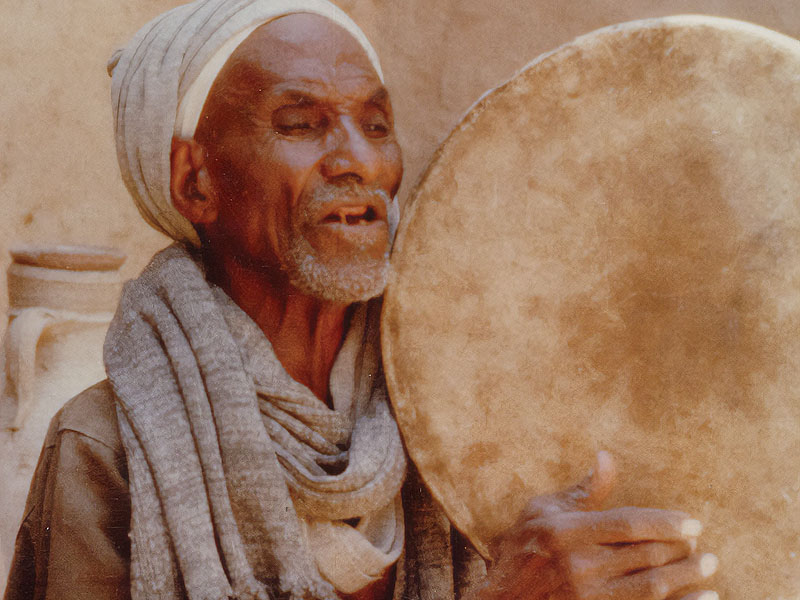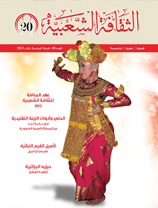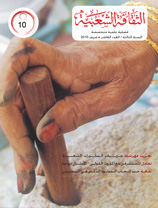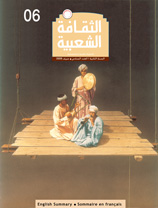Rhythms of the Egyptian Religious Singers
Issue 50

Dr. Muhammad Imran – Egypt
It has been observed that the majority of the religious (i.e. prophet praising) singers can only create rhythm using two basic means: by the tambourine (of various sizes) and with hand claps. This paper presents the artistic and cultural reasons behind why they had to resort to only these two means.
Tambourine
The significance of the tambourine for the singers stems from the fact that it is the only instrument they use in their anecdotal songs. They have never replaced it with another rhythmic instrument except in very rare occasions, even though it is perhaps not the ideal instrument for this type of singing. It may be possible that the choice of tambourine is based on the need for clear beats and rhythms. The use of the tambourine must have gone through several technical stages that contributed to developing performance methods, where each method was distinguishable with its own special features.
We have no clear explanation for the distinct use of the tambourine that is characteristic of gypsy religious singers, except that this association has evolved from ancient periods in accordance with lyric traditions, the diversity of performers' categories and their artistic trends. It is known that the development of rhythms accompanying singing is intended to control melody and organize beats, but Gypsy musicians use the tambourine in their contemporary singing to fulfill several other artistic functions beyond those basic ones, especially since the Egyptian tambourine was associated with singing long fictional stories.
It is not known how the tambourine was first used or associated with this type of singing (the prophet praising singing). This association seems not to have been originally established on the principle that each type of singing has its instruments, yet certainly, the musical activities associated with this kind of singing required forming rhythms to guide the melodies.




































































